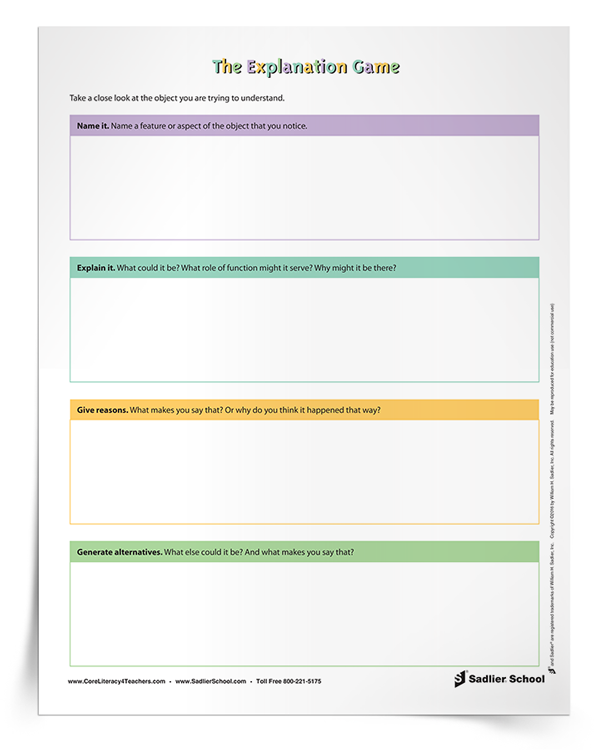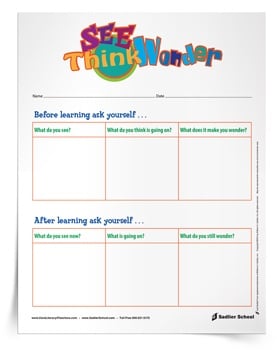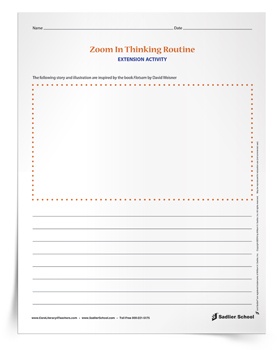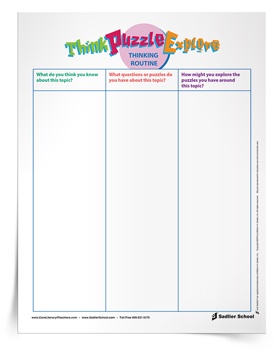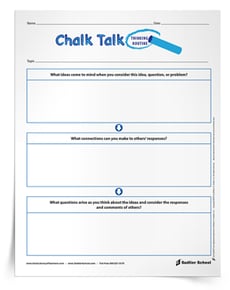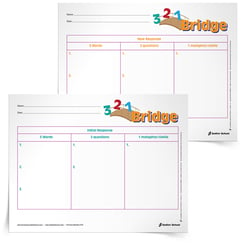September 1, 2016 ELA PD - Literacy, ELA PD - Thinking Routines, ELA K-5, ELA Focus - Reading, ELA Resources - Graphic Organizers, Core Literacy
The Explanation Game Visible Thinking Routine; A Professional Development Series
By: Erin Lynch
In January, I began an ongoing monthly post describing a “thinking routine” Making Thinking Visible: How to Promote Engagement, Understanding and Independence for All Learners by Ron Ritchhart, Mark Church, and Karin Morrison. If you are already familiar with previous posts discussing the book, scroll down to the Thinking Routine of the Month. If this is your first time seeing the posts on this topic, here is what you missed.
Last June, you may have read the post where I shared a few of my favorite books, which I thought might make good summer reading material. The professional book I suggested was: Making Thinking Visible: How to Promote Engagement, Understanding and Independence for All Learners by Ron Ritchhart, Mark Church, and Karin Morrison.
We used Making Thinking Visible: How to Promote Engagement, Understanding and Independence for All Learners by Ron Ritchhart, Mark Church, and Karin Morrison for a book study at my school last year. I really enjoyed the book because I have always considered that my job as a literacy specialist is to teach students strategies that allow them to better comprehend literature. One way that I do that is by making my thinking visible to my students. I try to explain to my students exactly what I do (my thought process) as I work through a text. Making Thinking Visible as been a valuable resource because the book contains "thinking routines." These are thinking activities to use with students to increase understanding of a topic by analyzing their thinking.
How Teachers Can Use Visible Thinking Routines
If you are a teacher, each individual visible thinking routine will help your students deepen their comprehension. The book divides the “thinking routines” into three categories:
1. Routines for Introducing and Exploring Ideas
2. Routines for Synthesizing and Organizing Ideas
3. Routines for Digging Deeper into Ideas
There are 21 “thinking routines” suggested in the book, with seven in each of the three categories. Every month I will highlight a visible thinking routine from Making Thinking Visible and how I have used it with my classes.
How Principals Can Use Visible Thinking Routines
If you are a principal, this text would be a great choice for a school-wide professional book study and/or a staff development project. Not only would you provide your staff with an invaluable resource, you will most likely increase the level of thinking within the student body. Here's how it will benefit you personally:
-
As you do school walk-throughs or observations, Making Thinking Visible will give you something to target as you enter classrooms.
-
By focusing on the “thinking routines” you should find that your teachers observations are easier, because the staff will know what is expected of them.
-
It will also help you provide feedback to your staff as you focus specifically on the “thinking routines.”
Thinking Routine of the Month: The Explanation Game
The purpose of the Explanation Game is to encourage students to look more closely at the details of an object and think of several reasons why that object is the way it is. It gets students to think about the “parts of the whole.” The Explanation Game asks learners to think about the reasons something works the way it does or about its purpose. By explaining the parts of an object and the relationship between those parts students can gain a deeper understanding.
This is how it works:
-
Take a close look at the object you are trying to understand.
-
Name it. Name a feature or aspect of the object that you notice.
-
Explain it. What could it be? What role or function might it serve? Why might it be there?
-
Give reasons. What makes you say that? Or why do you think it happened that way?
-
Generate alternatives. What else could it be? And what makes you say that?
The Explanation Game is a great way to start off the school year. Give students a copy of the Explanation Game Note–Taking Sheet (available for download) and have your students select various objects around your classroom to write about. The Explanation Game is also a terrific engagement activity to kick off a history or science unit. For example, if you are studying Pacific Northwest Native Americans, show your students a totem pole and have them play the Explanation Game before delving into the unit.
RELATED RESOURCES:
|
|
||
|
|
|



